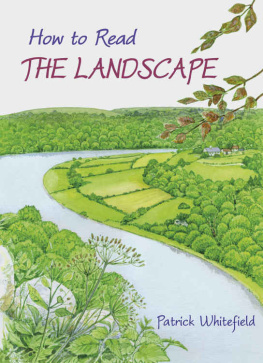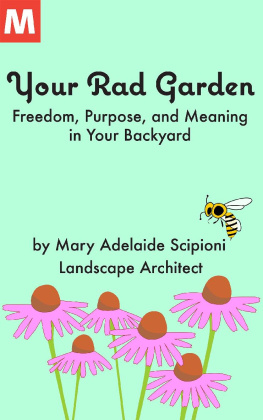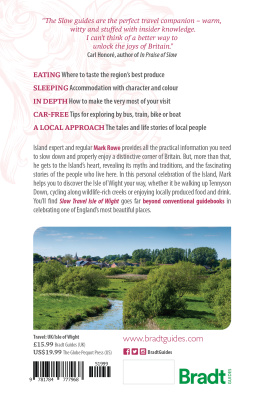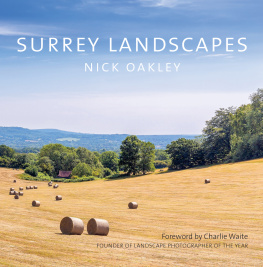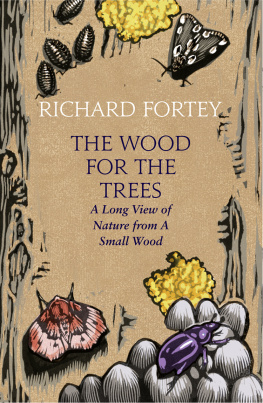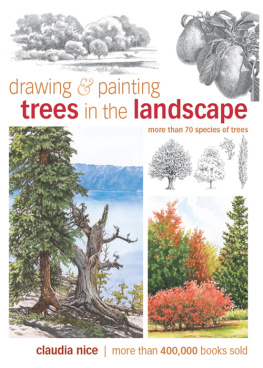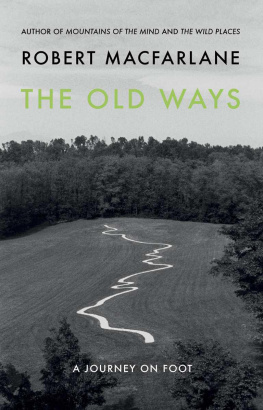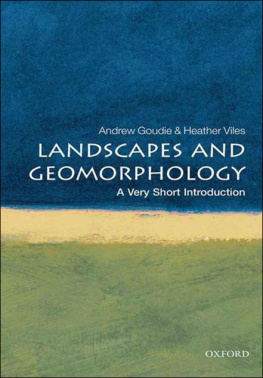

Published by
Permanent Publications
Hyden House Ltd
The Sustainability Centre
East Meon
Hampshire GU32 1HR
United Kingdom
Tel: 0844 846 846 4824 (local rate UK only)
or +44 (0)1730 823 311
Fax: 01730 823 322
Email:
Web: www.permanentpublications.co.uk
Distributed in the USA by
Chelsea Green Publishing Company, PO Box 428, White River Junction, VT 05001
www.chelseagreen.com
2014 Patrick Whitefield
The right of Patrick Whitefield to be identified as the author of this work has been asserted by him in accordance with the Copyrights, Designs and Patents Act 1998
Photographs Patrick Whitefield, unless stated otherwise
Patrick Whitefields website: www.patrickwhitefield.co.uk
Designed by Two Plus George Limited, www.TwoPlusGeorge.co.uk
Cover illustration by Jane Bottomley
eBook conversion - eBookPartnership: www.ebookpartnership.com
British Library Cataloguing-in-Publication Data
A catalogue record for this book is available from the British Library
PRINT ISBN 9781856231855
PDF ISBN 9781856231862
EPUB ISBN 9781856231879
MOBI ISBN 9781856231886
All rights reserved. No part of this publication may be reproduced, stored in a retrieval system, rebound or transmitted in any form or by any means, electronic, mechanical, photocopying, recording or otherwise, without the prior permission of Hyden House Limited.
Contents
Introduction
IVE ALWAYS been fascinated by the landscape. When I was a student at agricultural college I remember a friend saying, Its not safe to take a lift with Patrick. He farms as he drives. I dont know if people use the word to farm in that sense any more. It meant to observe and assess the land and decide what should be done in each field. It goes back to the days when most farms employed a lot of workers and the job of the farmer was to think and make decisions rather than to put those decisions into practice. Farming in that sense is one aspect of landscape reading.
As it turned out I never became a farmer, although I did work on farms for a number of years. When I acquired some land of my own it was a nature reserve rather than a farm and so I learnt to read the landscape from a somewhat different perspective, that of the wild plants and animals rather than the cultivated ones. Eventually I became a teacher of permaculture, and both of these perspectives are relevant in my present work, in fact they have merged into one, more holistic view of the landscape. Permaculture is all about creating productive landscapes that work in harmony with nature and are thus truly sustainable. Its a way of designing such landscapes, whether gardens, farms, villages or towns. Observation is the absolute bedrock of permaculture design. We can only design a truly harmonious landscape if we have a good knowledge and understanding of whats already there before we start.
I originally intended this book to be a permaculture workbook, covering the all-important observation stage of the design process. But my enthusiasm for the subject couldnt be bound by such a utilitarian plan. My notebook started to fill with all sorts of observations that might not be directly relevant to permaculture design but were just too interesting to pass by. I began to visualise my reader not so much as a designer but more as someone who spends time outdoors, whether for enjoyment or in the course of their job, snuggling down with the book in an armchair on a winters evening. But in the end I realised there may not be that much difference between the useful and the simply fascinating. Who can say which piece of information may be of use and which will not? In fact the kind of thinking which divides things up into, on the one hand, the useful but boring and ugly and on the other, the useless but interesting and beautiful, belongs to an age which is rapidly passing. It was an idea born in the industrial revolution and its time is over. So I hope that all of you who read this book will both enjoy it and find it useful.
.)
Nor is this book mainly about the history of the landscape. Many people assume that landscape reading and landscape history are one and the same. Perhaps this is because so many excellent books have been written about the history of the landscape while the broader field of landscape reading has been largely ignored. I have included a chapter on landscape history, as its clearly impossible to understand something without knowing about its past. But the history of the landscape is just one aspect of it, the human influence. The other influences rock, soil, climate, plants and animals also play their parts, and the landscape we see is the result of an ever-changing interplay of all these.
The result is a complex picture that can only be broadly sketched in a single book. There just isnt space to go into all the complexity. In fact if I were to try to do so the clarity of the picture would be lost, so Ive often simplified. For example, Ive sometimes had to ignore regional variations and make broad statements that are true for the country as a whole. I hope Ive never simplified things to the point of distorting the truth but everything you read in the pages that follow must be taken with the added comment that actually its more complicated than that. In any case my intention is not to tell you exactly whats going on in the landscape around you. Its to open a door on a new way of looking at that landscape and understanding it. The descriptions I give of individual landscapes are no more than examples and you may find something quite different in your own locality.
Ive tried as much as possible to write from personal experience but inevitably quite a lot of research has been necessary to fill in the gaps. Since landscape reading is such a wide field this has meant casting my net wide and getting snippets of information from many different books and papers on a variety of subjects. But I must mention a special debt of gratitude to Oliver Rackham, the great authority on the history of the landscape. His books and face-to-face teaching have been a source of both inspiration and information. Special thanks also go to my sister, Cristina Crossingham, who has carefully read each chapter and made many useful suggestions.
Introduction to this New Edition
SOMETIMES you dont really know what youve written until you have the printed book in your hand. The Living Landscape was a big, thick book. Some time after its publication I realised that, in my enthusiasm for the subject, Id included a lot of things which interest me but wouldnt necessarily interest the reader. These were side tracks and sub-plots that obscured the central theme rather than clarifying it.
So this new edition, with a new name, is much shorter than the old one but with all the best bits left in. The publishers also took the opportunity to produce it in full colour throughout and Ive added many new photographs. I think its much better and I hope you will too.
Ash Dieback
One specific point needs mentioning and thats the fate of the ash tree. As I write, in the spring of 2014, we dont yet know how the ash trees of Britain will react to ash dieback disease. I wrote the first version of this book before wed even heard of the disease and when I came to revise it, although I was aware that it had killed 95% of the ash trees in Denmark, I had yet to see an example of it. Will it do the same here, or will it behave differently and take a lesser toll on British ash trees? We dont know.
Next page
